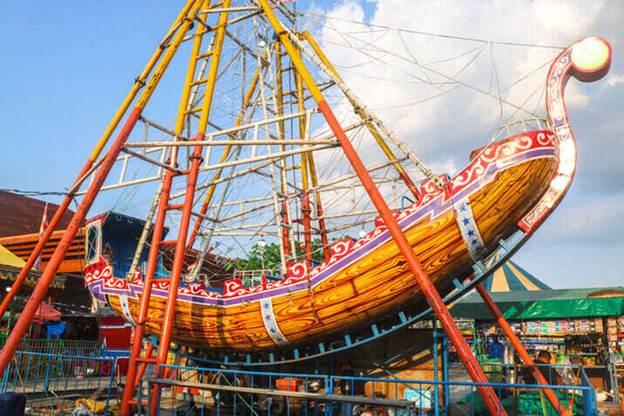
Serious Injuries from Amusement Park Ride Ejections
When a Thrill Ride Turns Into a Crisis
You buckle in for speed, not a free fall. The clicks sound right, the lights pop, and your stomach does that excited flip—until a bar slips, a seat shifts, or a latch doesn’t hold.
In a blink, the fun you paid for turns into fear you didn’t sign up for. That isn’t bad luck. It’s a preventable failure that should’ve been caught long before you took your seat.
Our personal injury attorneys at Horn Wright, LLP, handle ride-ejection cases across New York and also serve families in New Jersey, New Hampshire, Vermont, and Maine. The rules change across those borders, so your strategy has to match the venue.
If a ride ejection hurt you or your child, reach out to our team at (855) 465-4622. We’ll move fast, secure the records that matter, and keep the park from shaping the story while you focus on care.
You deserve clear answers, steady help, and a plan that respects your life. We’ll be straight with you from the first call to the final result.

Why Ride Ejections Happen
Ejections aren’t random. They trace back to choices—rushed checks, ignored warnings, or parts pushed past their limits. In busy parks, small lapses snowball fast, and the paper trail tells you where things really went wrong. We read that trail for gaps, delays, and “checked” boxes that don’t match what actually happened on the platform.
When a safety system breaks down, it rarely breaks in one place. Training, maintenance, and supervision fit together like gears. If one seizes, the others struggle, and riders pay the price. That’s why we look at the whole chain, not just a single moment at the panel.
Here are the patterns we see again and again:
- Worn or defective restraints: Locks, latches, and harnesses take a beating day after day. When replacements get delayed or test cycles are skipped, restraint systems fail when forces spike. One missed defect can eject a rider mid-cycle. Responsible programs catch these issues long before anyone boards, and the paperwork should prove it every time.
- Operator mistakes at the panel: Boarding, latching, and dispatch demand full attention. When attendants rush, silence alarms, or override safety interlocks, you pay for their shortcuts. Training should prevent that, and supervision should enforce it. If either one is thin, risk climbs fast and hangs around all day.
- Design gaps no one fixed: Some rides leave too little margin in restraint geometry or rely on sensors that misread movement. Even perfect operation struggles against those flaws. Manufacturers issue bulletins for a reason, and parks must act. When updates sit on a shelf, predictable failures follow and guests get hurt.
- Mechanical or electrical breakdowns: Bolts fatigue, hydraulics leak, and control boards glitch under heat and vibration. If a component lets go under load, a chain reaction can start before anyone can hit stop. Scheduled part swaps and diagnostic downloads exist to keep that chain from ever forming.
Small issues become big injuries at park speeds. If the records are thin, delayed, or copy-and-paste, that gap helps your case and points to where accountability belongs.
The Injuries You’re Up Against
Ejections cause the most severe trauma we see in amusement cases. The forces are extreme, and your body isn’t braced for them. Symptoms can roll in slowly, which is why same-day care matters for both your health and your claim.
Recovery rarely runs in a straight line. Good documentation—symptom journals, therapy notes, and specialist opinions—turns real life into proof insurers can’t brush aside. That’s how you protect the link between the ride and what you’re living with now.
Common injuries include:
- Traumatic brain injuries: Impacts at speed cause concussions, skull fractures, and lasting cognitive changes. Headaches, light sensitivity, and memory gaps often arrive later and linger. Early diagnostic imaging and steady follow-ups help you heal and protect the medical link when carriers push back.
- Spinal cord and vertebral damage: Sudden acceleration and impact compress vertebrae and stretch nerves. Partial paralysis, herniated discs, or chronic neuropathic pain can reshape work, sleep, and mobility. Plans for therapy, injections, or surgery belong in your damages—not on your credit card.
- Multiple fractures and joint destruction: Instinct makes you brace with arms and legs. Wrists, ankles, ribs, and shoulders take the hit. Surgeries, hardware, and long rehab are common, and residual limits can reduce earning power; that long tail must be counted.
- Internal injuries you can’t see: Rapid deceleration bruises organs and can cause internal bleeding. Shortness of breath, dizziness, or abdominal pain are red flags. Immediate care protects your health and shuts down “it wasn’t that bad” arguments later.
These injuries don’t clock out at discharge. They follow you home, into your routines, and into moments that should be simple.
Who is Legally Responsible
Liability rarely rests with one person. Ejections point to a system that failed in more than one place. Our job is to map the roles, match them to the records, and show how every decision lined up with what happened to you.
Finger-pointing starts early. Evidence ends it. When each party’s duty is clear, insurers lose room to stall or minimize. That’s where leverage comes from.
The usual players include:
- Park owners and operators: They set maintenance budgets, staffing levels, and safety policies. When inspections slip, training thins, or warnings get ignored, that’s on management. Their duty is to keep you safe, not just keep lines moving faster.
- Ride operators on shift: The panel is a safety device. Skipping restraint checks, dispatching through alarms, or mishandling an emergency sequence creates direct risk. With proper training and supervision, these errors don’t happen. When they do, the park is responsible under the law.
- Maintenance contractors and vendors: Parks often outsource inspections and repairs. If a vendor cut corners, used wrong hardware, or closed a work order without a real fix, they share fault. Contracts, torque logs, and parts receipts tell the story better than any statement ever will.
- Manufacturers and designers: Defective parts, confusing control layouts, or restraint designs with too little margin create foreseeable danger. Product liability brings those companies into the claim so every responsible party is at the table.
When the chain of causation is tight, fair outcomes stop being hypothetical.
What You Should Do Right Now
Those first hours feel chaotic. A few steady moves protect your health and your case.
Start with same-day medical care and tell providers exactly what failed, where you hit, and how symptoms feel. Emergency room notes and imaging create a clean timeline that ties injuries to the incident and guides treatment.
Report the event in writing and keep a copy—include date, time, ride name, seat location, and what the operator did or didn’t do. Specifics matter later, when stories start to shift.
Document the scene with photos or short video if it’s safe—restraint hardware, your seat, the loading platform, signage, and the operator station. Ask witnesses for names and numbers; quick voice notes help you capture details you’ll forget by tomorrow.
Then let your lawyer send preservation letters for camera footage, control logs, inspection files, and maintenance downloads so proof doesn’t “update” away.
The Real Costs You Shouldn’t Shoulder Alone
An injury at a park doesn’t end when you leave the hospital. The bills don’t stop with the emergency room visit.
You’re juggling follow-up appointments, physical therapy sessions, and time off work that eats into your paycheck. Every trip to a doctor or specialist costs money, time, and energy you shouldn’t have to spend fixing someone else’s mistake.
If your job demands movement, focus, or heavy lifting, those physical limitations can wreck your routine fast. You lose overtime, skip shifts, and fall behind while expenses keep piling up. That imbalance, working less while paying more, isn’t just unfair, it’s exactly why the law exists to protect you.
Then there’s the emotional toll no one sees. Maybe crowds now make you uneasy. Maybe your kids cling a little tighter when they see a roller coaster. Even simple things like loud noises or flashing lights can stir panic. These changes alter how you live, laugh, and relax—and they count as real, compensable harm.
A fair claim accounts for all of it: your past and future medical costs, lost wages, home or vehicle adjustments, reduced earning power, and the strain this accident placed on your life. When your claim tells the whole story, the outcome finally reflects what you’ve truly lost and what it’ll take to move forward.
Building Winning Ride-Ejection Cases
A restraint will hold because someone did their job. When that promise breaks, justice has to do more than pay a bill. It should change behavior, restore stability, and help you feel steady again.
Our amusement park accident attorneys compare inspection schedules with what actually happened, matches part numbers to service bulletins, and lines up staffing charts against the shift in the booth.
Engineers explain why the failure happened and how it should’ve been prevented. Doctors map your care needs. Economists translate missed work and long-term limits into numbers carriers can’t brush off. Preparation is leverage, and leverage moves cases.
A ride should lift your spirit, not launch you into harm. If negligence threw you into pain and chaos, we’ll stand with you—pressing for change, securing compensation, and helping you start anew with confidence.

What Sets Us Apart From The Rest?
Horn Wright, LLP is here to help you get the results you need with a team you can trust.
-
Client-Focused ApproachWe’re a client-centered, results-oriented firm. When you work with us, you can have confidence we’ll put your best interests at the forefront of your case – it’s that simple.
-
Creative & Innovative Solutions
No two cases are the same, and neither are their solutions. Our attorneys provide creative points of view to yield exemplary results.
-
Experienced Attorneys
We have a team of trusted and respected attorneys to ensure your case is matched with the best attorney possible.
-
Driven By Justice
The core of our legal practice is our commitment to obtaining justice for those who have been wronged and need a powerful voice.

